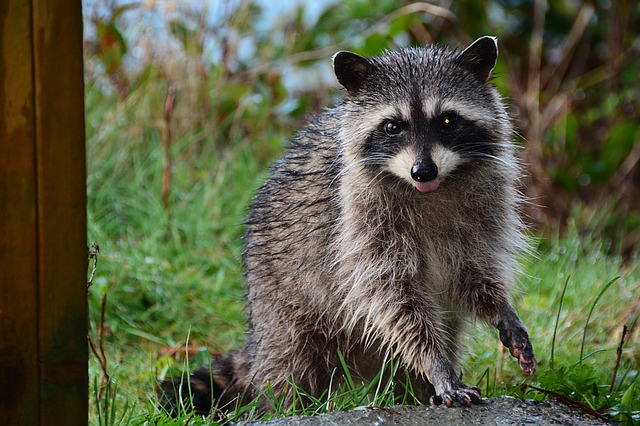USGS Summary
Baylisascaris procyonis, the common raccoon roundworm, is the most commonly recognized cause of clinical larva migrans (LM) in animals, a condition in which an immature parasitic worm or larva migrates in a host animal’s tissues, causing obvious disease. Infection with B. procyonis is best known as a cause of fatal or severe neurologic disease that results when the larvae invade the brain, the spinal cord, or both; this condition is known as neural larva migrans (NLM).

Baylisascariasis is a zoonotic disease, that is, one that is transmissible from animals to humans. In humans, B. procyonis can cause damaging visceral (VLM), ocular (OLM), and neural larva migrans. Due to the ubiquity of infected raccoons around humans, there is considerable human exposure and risk of infection with this parasite. The remarkable disease-producing capability of B. procyonis in animals and humans is one of the most significant aspects of the biology of ascarids (large roundworms) to come to light in recent years.
Infection with B. procyonis has important health implications for a wide variety of free-ranging and captive wildlife, zoo animals, domestic animals, as well as human beings, on both an individual and population level. This report, eighth in the series of U.S. Geological Survey Circulars on zoonotic diseases, will help us to better understand the routes of Baylisascaris procyonis infections and how best to adequately monitor this zoonotic disease.
The 122 page monograph was written by Dr. Kevin Kazacos, professor emeritus of veterinary parasitology and former director of clinical parasitology at Purdue University College of Veterinary Medicine.
Download it HERE
Related:
- Raccoon roundworm: Pyrantel pamoate/marshmallow mix shows promise in reducing Baylisascaris prevalence
- Outbreak News Radio: Baylisascaris procyonis (raccoon roundworm)
- Raccoon roundworm: Study suggests subclinical infections in wildlife rehabilitators
- Raccoon roundworm: CDC describes seven recent cases, all survivors


2 thoughts on “Baylisascaris: Everything you wanted to know is found in USGS monograph”